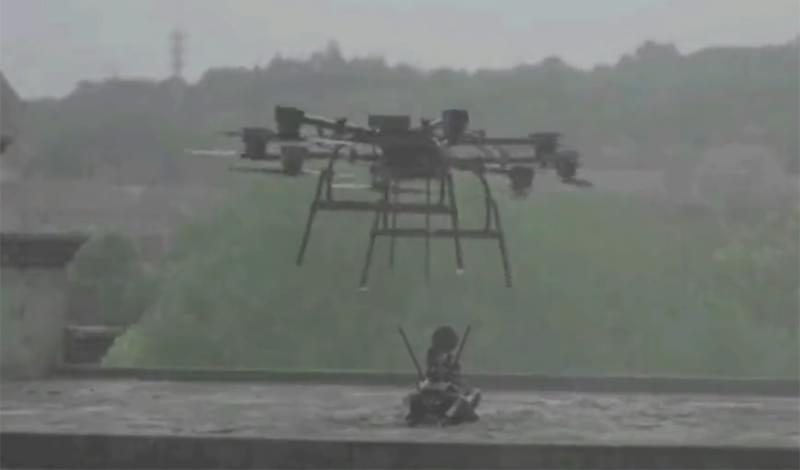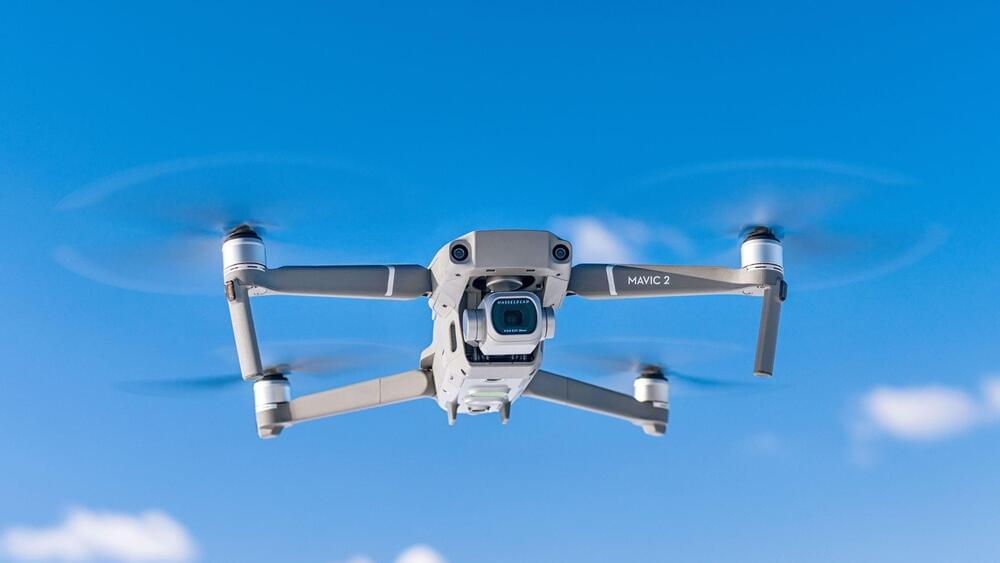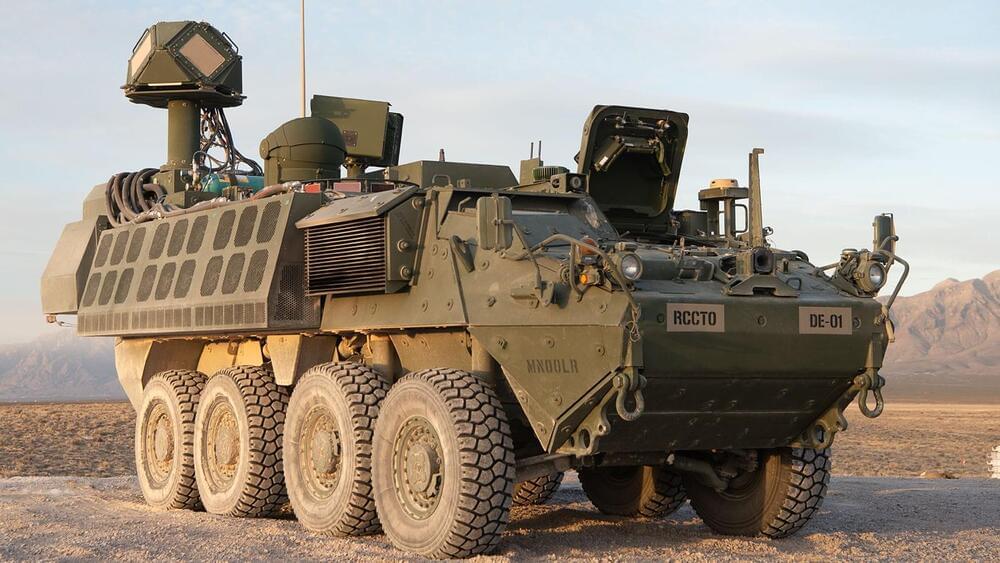It’s unclear what “Blood-Wing” in the top-right corner refers to, but the drone itself is called Red Wing. According to the description, this small aerial vehicle could travel to a weak point behind the enemy lines and perform a “surprise attack” by deploying the robot dog. In one envisioned scenario, this four-legged machine “can be placed on the roof of the enemy to occupy the commanding heights to suppress firepower.”
Mounted on its back is what appears to be a Chinese QBB-97 (designated as Type 95 LGM in the United States). This 5.8 mm light support weapon can fire up to 650 rounds a minute.
No further specifications have been made available, but the drone and robodog pairing seems designed primarily for use in urban environments that are notoriously difficult for human foot soldiers to infiltrate. It could, for example, be used to scout ahead, take out hard-to-access targets or create a diversion. Kestrel Defence explains that ground troops, supported from above, could conduct “a three-dimensional pincer attack on the enemy in the building.”





